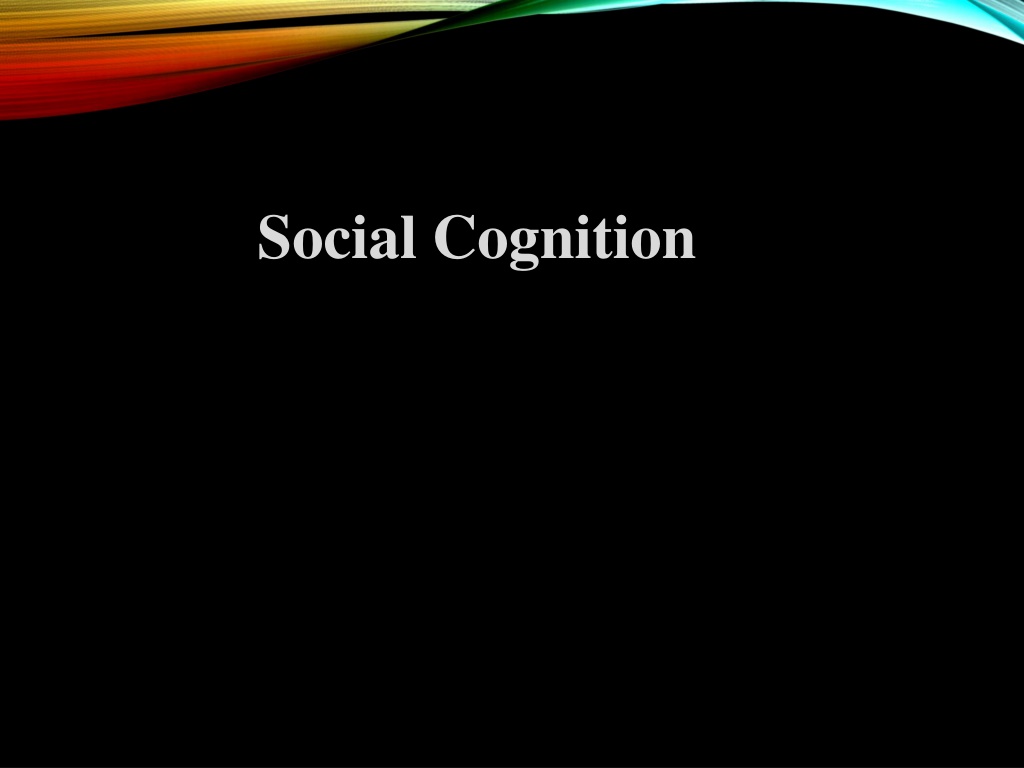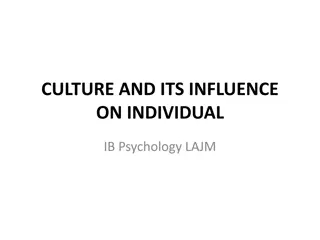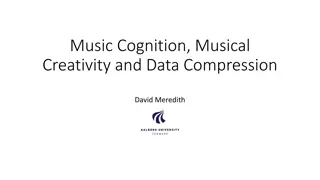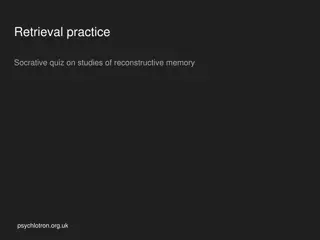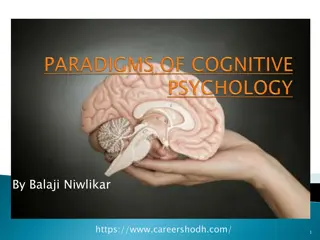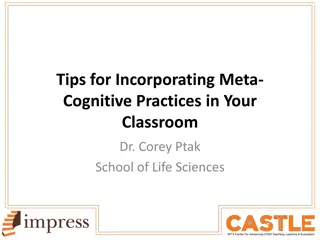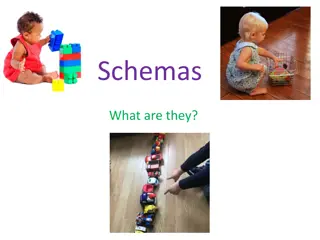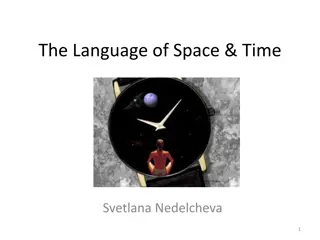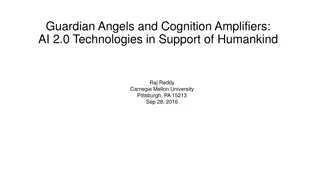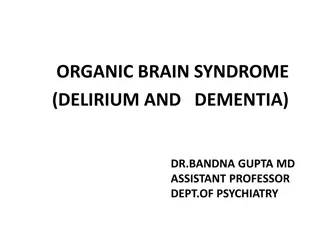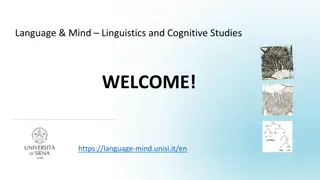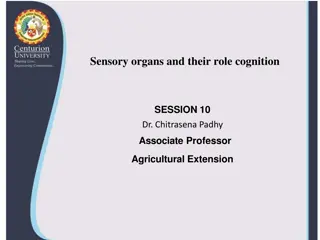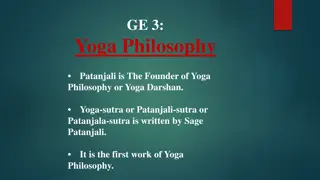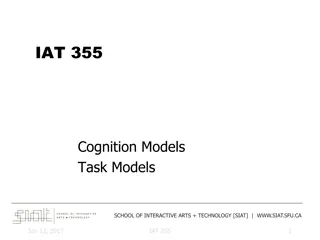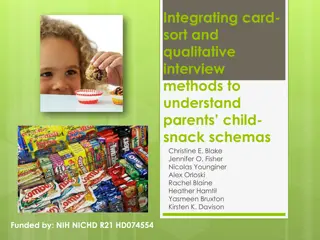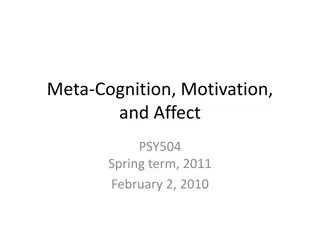Understanding Social Cognition and Schemas
Social cognition explores how people perceive and interpret social information, using automatic and controlled thinking processes. Schemas are mental structures that help us organize knowledge about the social world, affecting how we remember, interpret, and act upon information. The self-confirming nature of schemas can lead to self-fulfilling prophecies. Heuristics, such as representativeness and availability, influence decision-making by guiding judgments based on resemblance and ease of recall.
Download Presentation

Please find below an Image/Link to download the presentation.
The content on the website is provided AS IS for your information and personal use only. It may not be sold, licensed, or shared on other websites without obtaining consent from the author. Download presentation by click this link. If you encounter any issues during the download, it is possible that the publisher has removed the file from their server.
E N D
Presentation Transcript
SOCIAL COGNITION How people think about themselves and the social world, or more specifically, how people select, interpret, remember, and use social information to make judgments and decisions. The assumption is that people are generally trying to form accurate impressions of the world and do so much of the time. Because of the nature of social thinking, however, people sometimes form erroneous impressions. Automatic Thinking Quick and automatic, without thinking, thinking that is nonconscious, unintentional, involuntary, and effortless. Controlled thinking Is effortful and deliberate, pausing to think about self and environment, carefully selecting the right course of action.
SCHEMAS Mental structures that organize our knowledge about the social world (about people, ourselves, social roles, specific events). Schemas are typically very useful for helping us organize and make sense of the world and to fill in the gaps of our knowledge. Schemas are particularly important when we encounter information that can be interpreted in a number of ways, because they help us reduce ambiguity. Information consistent with our schemas are remembered more (e.g., perseverance effect)
NATURE OFSCHEMAS Self-Confirming nature of schemas Self-fulfilling prophecies Predictions that, in a sense, make themselves come true. Behavioral confirmation A type of self-fulfilling prophecy whereby people s social expectations lead them to act in ways that cause others to confirm their expectations. Do we get from others what we expect of them?
WHAT DO SCHEMAS DO? The human mind must think with the aid of categories orderly living depends upon it. --Allport, 1954 Help us organize information Help us remember certain things Help us to fill in details when our information is incomplete Can influence behavior Help us to interpret ambiguous behavior Influence what information we attend to
REPRESENTATIVENESS HEURISTIC A strategy for making judgments based on the extent to which current stimuli or events resemble other stimuli or categories. Are these judgments accurate?
AVAILABILITY HEURISTIC If I think of it, it must be important Suggests that the easier it is to bring information to mind, the greater it s importance or relevance to our judgements or decisions.
PRIMING Increased availability of information in memory or consciousness resulting from exposure to specific stimuli or events.
AUTOMATIC PRIMING Effect that occurs when stimuli of which individuals not consciously aware alter the availability of various traits or concepts in memory.
FALSE CONSENSUS EFFECT The tendency to assume that other behave or think as people do to a greater than is actually true.
POTENTIAL ERROR SOURCES OF IN SOCIAL COGNITION Rational versus Intuitive Processing Dealing with Inconsistent Information The Planning Fallacy The Potential Costs of Thinking Too Much Counterfactual Thinking Magical Thinking Thought Suppression
RATIONAL VERSUS INTUITIVE PROCESSING Going with our guts Cognitive Experiential Self-Theory, Epstein, 1994 Deliberate and intuitive thinking
THE PLANNING FALLACY The tendency to make optimistic predictions concerning how long a given task will take for completion Also known as optimistic bias Why to we do this? Three factors.
THE POTENTIAL THINKING COSTS TOO OF MUCH Why, sometimes, our tendency to do as little cognitive work as possible may be justified.
COUNTERFACTUAL THINKING How it relates to Regret Upward Counterfactual Thinking Downward Counterfactual Thinking Inaction Inertia Overall, what it results in
MAGICAL THINKING Thinking involving assumptions that don t hold up to rational scrutiny-for example, the notion that things that resemble one another share fundamental properties. Three types of magical thinking. Rozin, Markwith, & Nemeroff (1992)
THOUGHT SUPPRESSION Efforts to prevent certain thoughts from entering consciousness. How do we do this? Automatic Monitoring Process Operating Process Problems
AFFECTAND COGNITION How feelings shape thought and thought shapes feelings. Affect: Our current feelings and moods. Cognition: The ways in which we process, store and remember, and use social information. A reciprocal relationship.
THEINFLUENCE OF AFFECT ON COGNITION Affect and style of information processing we adopt. Affect and memory Affect and plans and intentions Mental contamination Edwards and Bryan (1995)
INFLUENCE OF COGNITION ON AFFECT Two ways we are going to talk about it 1. Activation of schemas 2.Cognition and emotion-provoking events
THE AFFECTINFUSION MODEL FORGAS (1995) Affect influences social thought and ultimately social judgements. How? Affect serves as a trigger Affect as information When do these effects occur?
THOUGHT SUPPRESSION Efforts to prevent certain thoughts from entering consciousness.
